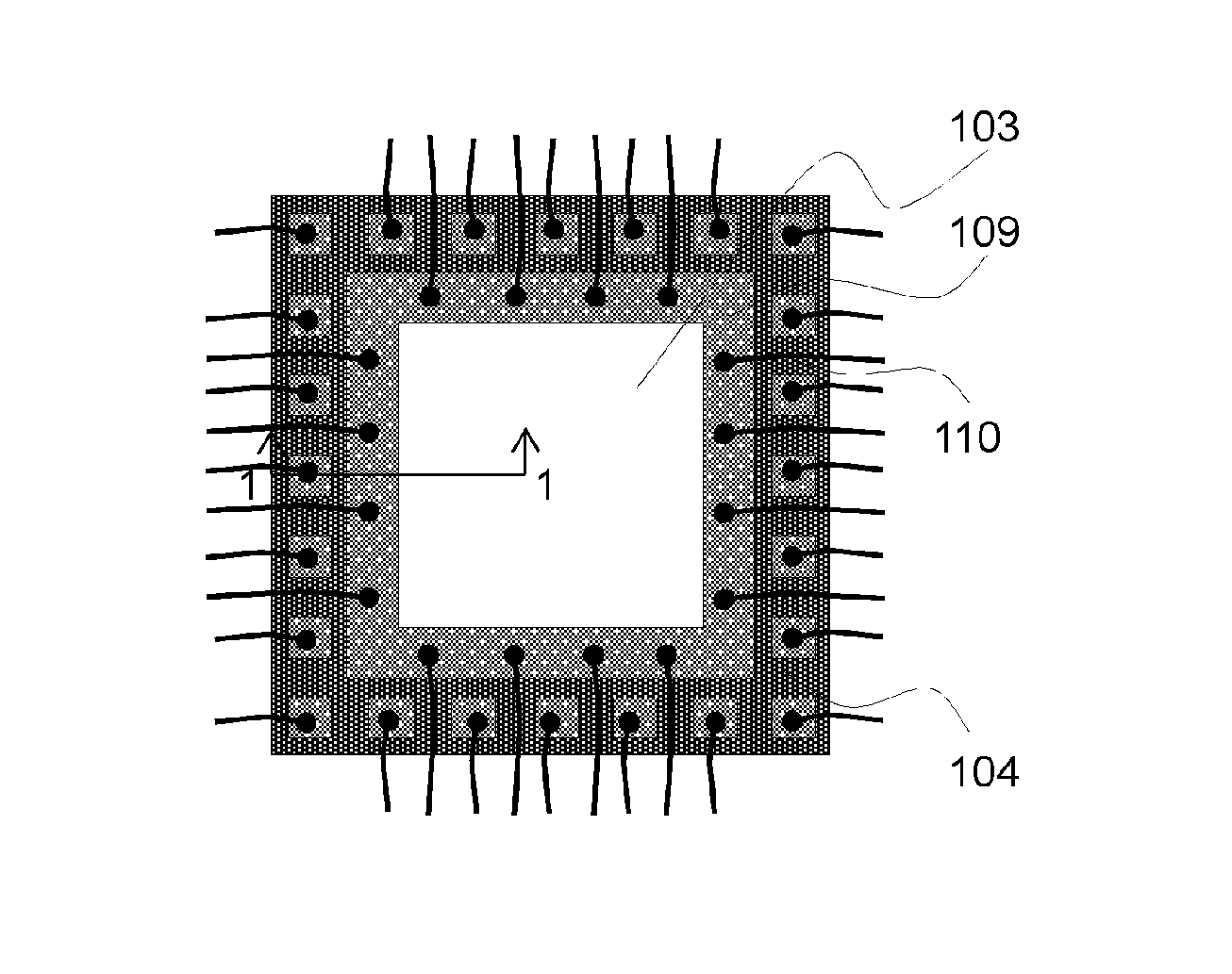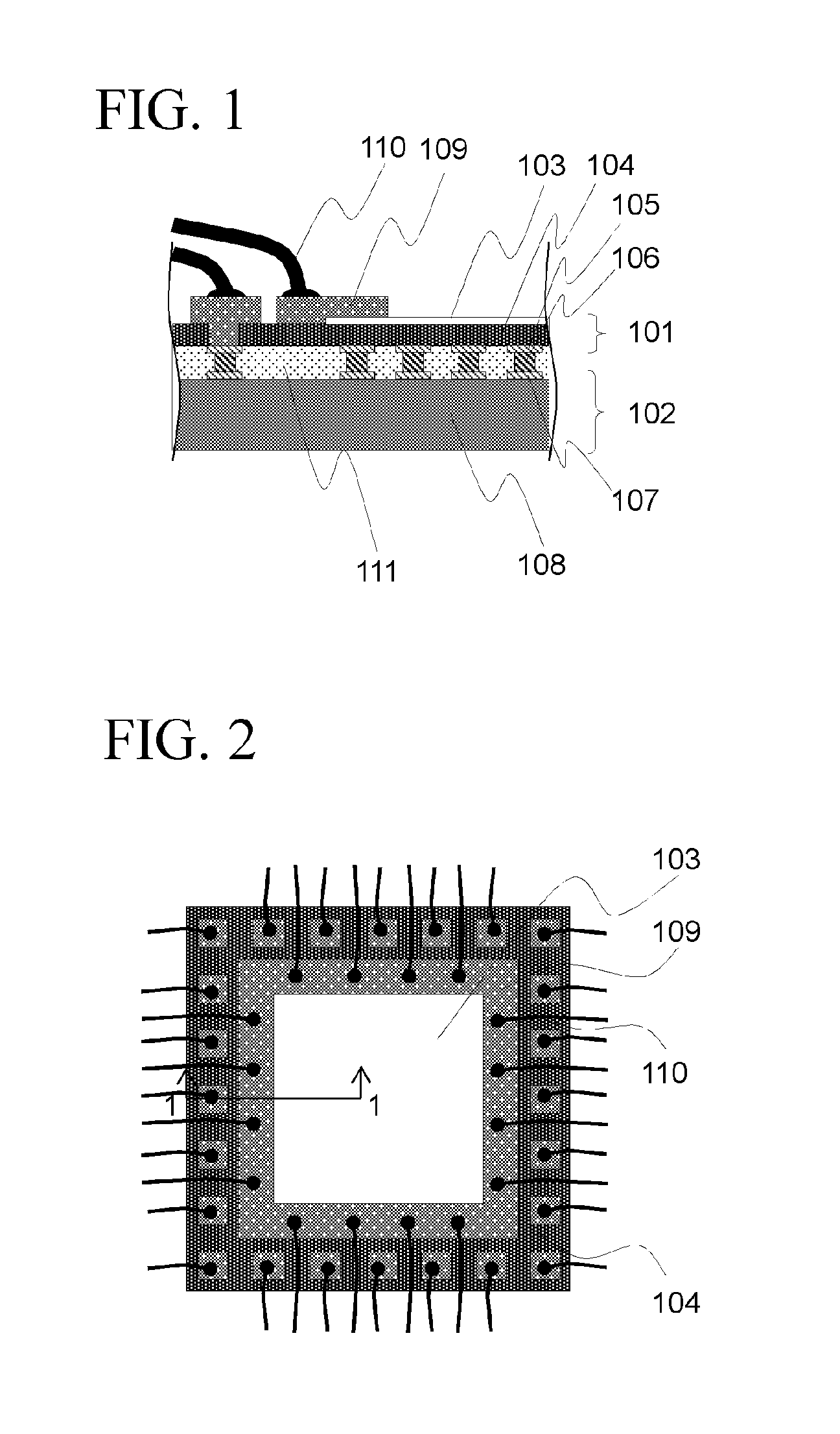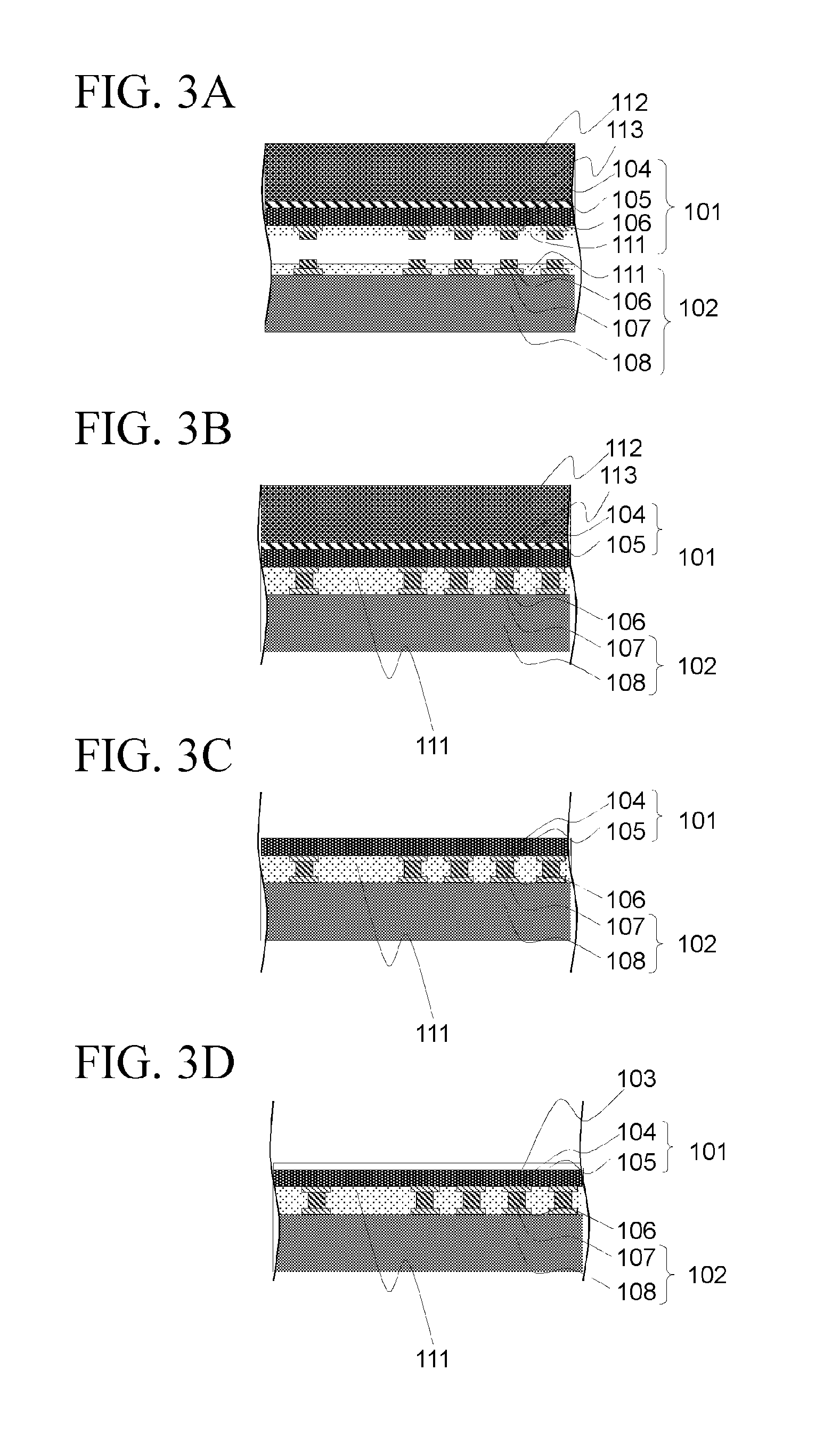Light-receiving device and manufacturing method thereof
a technology of light-emitting devices and manufacturing methods, which is applied in the direction of radiation-controlled devices, semiconductor devices, electrical apparatus, etc., can solve the problems of limiting the actual aperture ratio, low light utilization rate, and large loss of incident light, so as to reduce the risk of deterioration of the properties of the photodiode or damage of the photodiode at the time of providing the wiring
- Summary
- Abstract
- Description
- Claims
- Application Information
AI Technical Summary
Benefits of technology
Problems solved by technology
Method used
Image
Examples
first exemplary embodiment
[0064]FIG. 1 is a sectional view of a light-receiving device according to a first exemplary embodiment of the disclosure. The light-receiving device is a laminate type device structure in which first pixel electrode 105 formed on photoelectric converter 101 and second pixel electrode 107 formed on scanning circuit unit 102 are connected to each other by microbump 106. Transparent conductive film 103 is formed on photodiode 104 of photoelectric converter 101. Rewiring 109 for supplying power to scanning circuit unit 102 and a photodiode is formed on transparent conductive film 103, and rewiring 109 is electrically connected to an external electrode by wire 110.
[0065]Peripheries of microbump 106 are covered with protection film 111, and rewiring 109 is formed directly on at least one of first pixel electrodes 105.
[0066]FIG. 2 is a top view of the light-receiving device according to the disclosure. A part of an upper surface of transparent conductive film 103 is covered with rewiring 1...
second exemplary embodiment
[0087]FIG. 4 is a sectional view of a light-receiving device according to a second exemplary embodiment of the disclosure, and FIG. 5 is a plan view.
[0088]Referring to FIG. 4 and FIG. 5, peripheries of photodiode 104 are covered with resin 114.
[0089]Rewiring 109 is formed on resin 114 and photodiode 104, and is electrically connected to an external electrode by wire 110.
[0090]As seen from the above, since the peripheries of photoelectric converter 101 are covered with resin 114 and a size of a plan of photoelectric converter 101 itself can be reduced, the number of devices mounted near the wafer is increased, and costs of the devices can be reduced.
[0091]Further, a restriction in which photoelectric converter 101 and scanning circuit unit 102 are made the same size can be released, and a degree of freedom in design of the device is significantly improved.
[0092]FIG. 6A to FIG. 6I are sectional views relating to a manufacturing method of the light-receiving device according to the sec...
third exemplary embodiment
[0103]FIG. 7 is a sectional view of a light-receiving device according to a third exemplary embodiment of the disclosure, and FIG. 8 is a plan view thereof.
[0104]Referring to FIG. 7 and FIG. 8, rewiring 109 can be formed in a grid shape between pixel electrodes on an upper surface of transparent conductive film 103 of photodiode 104, so that the OB region is removed and incident light into pixel electrodes is not inhibited.
[0105]As described above, rewiring 109 on transparent conductive film 103 between pixel electrodes where the OB region is removed is wound in a grid shape, thereby making it possible to reduce dispersion of voltage applying due to a positional relationship of rewiring 109 and photodiode 104.
[0106]The disclosure is not limited to the exemplary embodiments described above, and there is a variety of other forms changed within a range in consideration of those skilled in the art with respect to the exemplary embodiments, and the like, without departing from the spirit...
PUM
 Login to View More
Login to View More Abstract
Description
Claims
Application Information
 Login to View More
Login to View More - R&D
- Intellectual Property
- Life Sciences
- Materials
- Tech Scout
- Unparalleled Data Quality
- Higher Quality Content
- 60% Fewer Hallucinations
Browse by: Latest US Patents, China's latest patents, Technical Efficacy Thesaurus, Application Domain, Technology Topic, Popular Technical Reports.
© 2025 PatSnap. All rights reserved.Legal|Privacy policy|Modern Slavery Act Transparency Statement|Sitemap|About US| Contact US: help@patsnap.com



